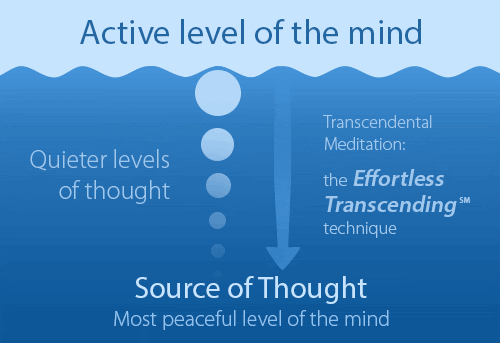By Major Shannon Vaughn
When most people think of the words “innovation” and “Army” they likely think of larger weapons and faster tanks. On Fort McNair, however, the National Defense University (NDU) is building more resilient and mindful leaders than ever before. Through a program sponsored by the David Lynch Foundation for Consciousness-Based Education and World Peace, NDU is putting senior officers through intensive resiliency training using transcendental meditation.
What is transcendental meditation? Transcendental meditation, or TM, by definition is “a practice or technique for detaching oneself from anxiety and promoting harmony and self-realization by meditation, repetition of a mantra, and other yogic practices.” You might remember it better, however, as what Indian guru Maharishi Mahesh Yogi taught the Beatles in February 1968.

So how did the teachings of Maharishi Mahesh Yogi make its way to the home of the National War College? Obviously, that would be through the former Assistant Strength and Conditioning coach of the Washington Redskins, Tony Spinosa, a former career Army officer who is now the Director of Health Fitness at NDU. Roundabout? Sure. Effective? Even more so. But, remember, a resilient soldier is more combat effective than a cache of weapons.
Tony was crucial in bringing innovative ways to train resiliency in our senior military members. As Bob Roth, CEO of the David Lynch Foundation, says, “We send these young men and women off to harm’s way, and they come back with post-traumatic stress or TBI [traumatic brain injury], and transcendental meditation is a huge help. But what can we do to equip these courageous young people before they go out? (Now) they are more resilient. When something happens, they heal much faster.”
So how did I come to join this program? The United States Army Reserve Innovation Command (USARIC), which falls under Army Futures Command, seeks out key individuals to leverage their civilian careers to make the active Army more innovative. This means using that breadth of knowledge built up daily in our civilian careers and leveraging it to make “weekend warriors” more valuable to the active Army than ever.
Over the years I have searched for ways to be more effective in my home, work, and military lives, coming across TM last year while reading Bob Roth’s book Strength in Stillness: The Power of Transcendental Meditation, which I checked out on a whim from the DC Public Library. As with most things, I was skeptical. “What could go wrong?” I thought.
As Dr. Hassan Tetteh, the Command Surgeon at NDU, says, “What could go wrong? As it turns out not much. The side effects of medications we prescribe … the side effects of pills, therapies, and even surgeries can be far worse that the side effects of TM. So, what are the potential side effects? I guess you could potentially become calmer. And in doing so you may have better relationships with people. So, succinctly, not much.”
If you ask me, the worst that can happen is you lose a few minutes each day. But if I am being honest, I doubt I need any extra time staring at a screen.
What I can say, however, is the effect TM has had so far has been beneficial. Although I am only 100 consecutive days into the practice, TM has given me that much-needed break each day to pause and recenter. I have found that over the past decade or so work has sped up to the point where the deluge of information and requests are only broken by the nightly requirement of sleep. The equivalent of that nocturnal break is what TM has brought me each day—but in the middle of it.
By taking 20 minutes for a TM session, I can create hours of energy and effectiveness. Previously I would need high-intensity exercise to give me that boost, but with TM I do not need to worry about the ramp up or sweaty cool down time, plus the levels of awareness are higher post-TM session.
So, what is the best analogy for TM? I think it is an ocean. The daily grind in that churn atop the water (or “Active level of the mind” in Figure 1)—constant, unpredictable, and often an effort just to stay afloat. The practice of TM, however, gives you a simple mantra of no meaning that you can repeat and let the mind sink deeper toward the ocean bottom where waters are calmer. As the mind settles, the body lets off stressors. This cycle could repeat a dozen times or more in 20 minutes; churning waters followed by a peaceful restfulness over and over. Other days, a single cycle may not happen at all. And even on those days, I cannot say I have missed staring at a screen.
Is it right for you? I cannot say. But I can say that I am thankful that NDU and the USARIC are promoting another type of innovation: mindful and resilient soldiers who appreciate that their brain is another powerful weapon in the cache.
Major Shannon Vaughn is a member of the US Army Reserve Innovation Command, which drives operational innovation, concepts, and capabilities to enhance the readiness and lethality of the Army’s Future Force by leveraging the unique skills, agility, and private sector connectivity of America’s Army Reserve.

